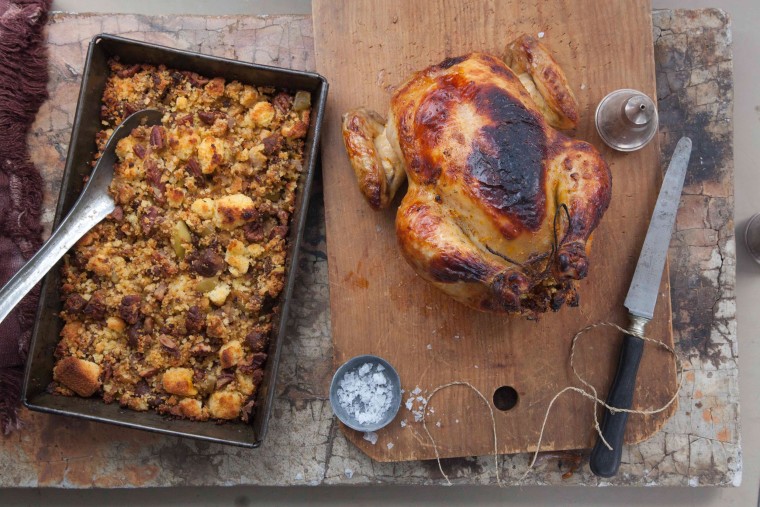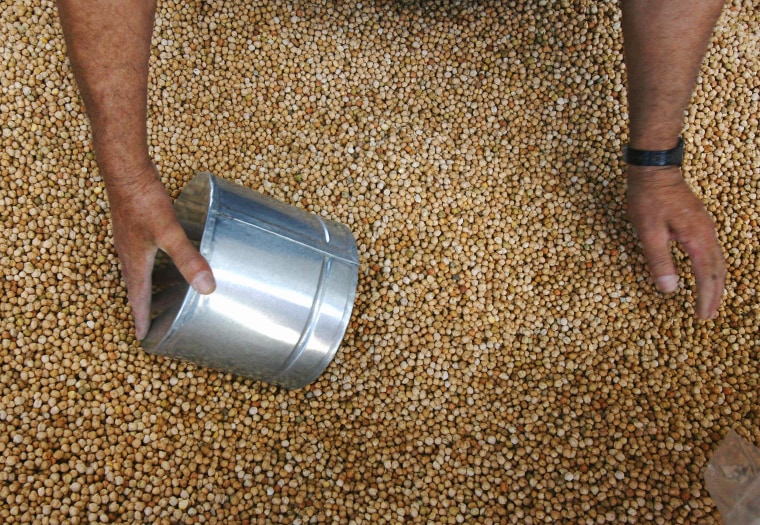Today, many Thanksgiving dinners will include turkey, sweet potatoes, stuffing and pumpkin pie. But most Americans would be surprised to discover that one of the earliest Thanksgiving meals on record served salted pork and Spanish garbanzo beans.
Fifty six years before the Pilgrims and the Wampanoag celebrated their famous banquet in 1621, chrome-armored Spaniards and Timucua natives hosted their own Thanksgiving in northern Florida.
“St. Augustine’s settlers celebrated the nation’s first thanksgiving over a half century earlier on September 8, 1565 following a religious service,” said University of Florida historian Michael Gannon in an audio interview for the Florida Humanities Council.
The communal meal included a salty pork stew with ship rations of bread and red wine. The Timucua natives might have also brought local foods like wild turkey, venison, corn and squash.
There are many Thanksgiving stories about European settlers and Native Americans coming together to weave the diverse history of America. In that sense, Thanksgiving meals are like roadmaps that show how different cultures and traditions have been fused together through food to create new dishes around the world.
This is the case with the turkey, a classic American food that made its way to Spain in the late 15th century, and then later Europe. The large bird, or guajolote as it is called in Mexico, is big enough to feed a family. But it wasn’t until Charles Dickens popularized the New World food in “A Christmas Carol” almost 350 years later that it became a classic holiday fixture with gravy and stuffing in many English homes.

Before the Europeans arrived to the Americas, Native Americans had been celebrating harvest festivals for thousands of years. Tribes like the Wampanoag thanked the animals, plants and earth for providing food, clothing and shelter. And centuries later, we can thank Native Americans for their role in cultivating many of the foods we eat today.
“They perfected the art of agriculture,” wrote American historian and activist Howard Zinn in his book A People’s History of the United States, "and figured out how to grow maize (corn), which cannot grow by itself and must be planted, cultivated, fertilized, harvested, husked, shelled. They ingeniously developed a variety of other vegetables and fruits, as well as peanuts and chocolate and tobacco and rubber.”
Today, many of the dishes at our Thanksgiving table - the corn in our stuffing or bread, the chocolate and peanuts in our dessert - have rich culinary histories. A glass of wine, for instance, contains the smell and taste of the flora and minerals from vineyards in California, Spain and Chile, where generations of skilled hands - many of them immigrants - imported and blended different grapes to create complex and unique flavors.
Follow NBC News Latino on Facebook and Twitter
Thanksgiving not only tells the story of Native Americans and outsiders coming together in America; it's also a reminder that food is a collaborative effort between families, friends, neighbors and immigrants who have passed down traditions and knowledge from generation to generation.
Digging past each layer of food reveals older cultures and histories that go back generations: before our ancestors migrated to large cities and even before they learned how to plant crops in remote villages, they too were nomads and outsiders who relied on the hospitality of others to get by.
Reconnecting with this nomadic perspective reminds us Thanksgiving is a day of gratitude and consciousness. Like the Native Americans - who hosted the first Thanksgivings - we can channel their spirit of hospitality and connections with nature and others to unearth all the hidden stories that live in our dish of corn, glass of wine, roasted turkey leg and just maybe, that side of garbanzos.
